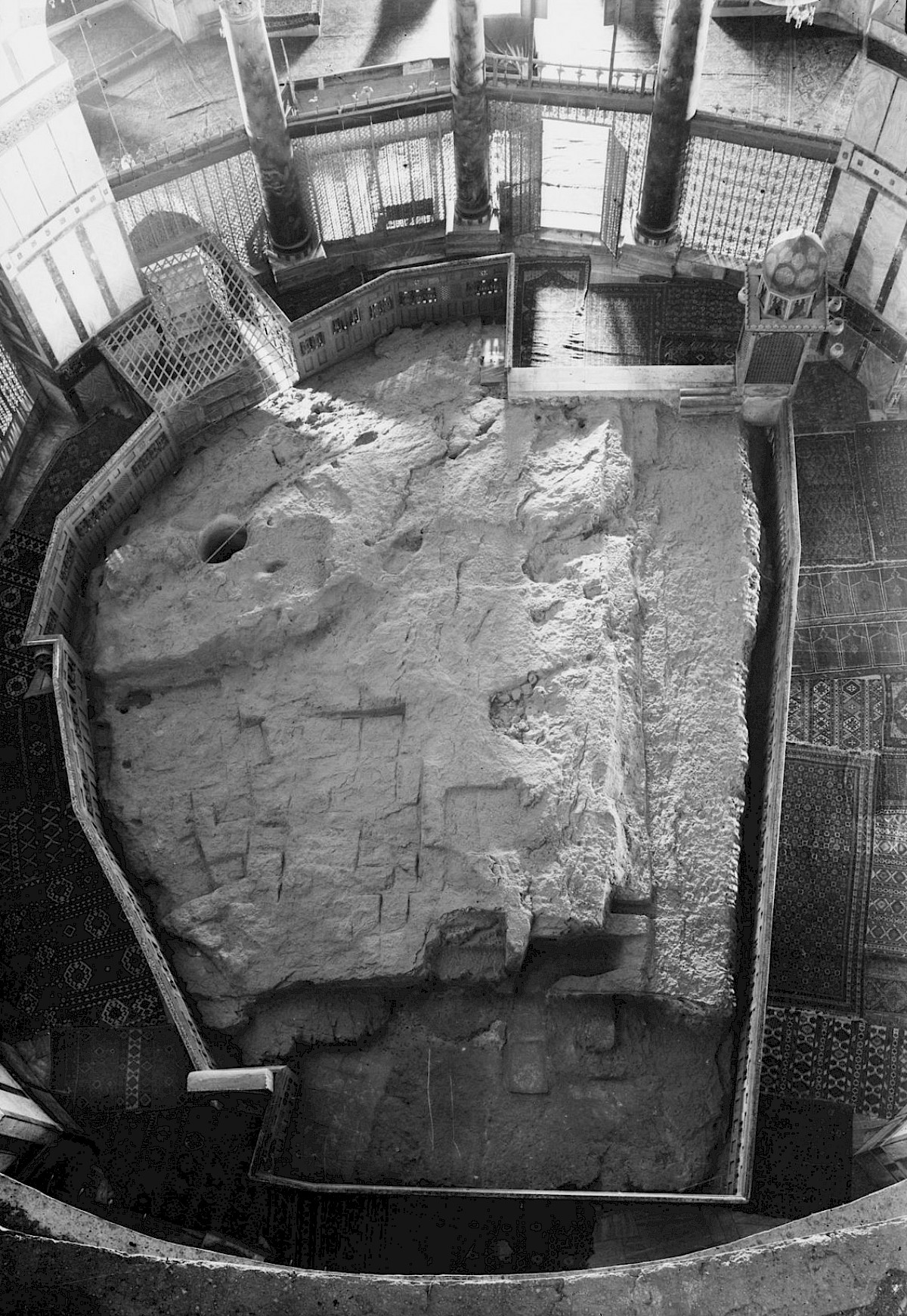

In the late 7th century, the Umayyad caliph ʿAbd al-Malik ibn Marwān began a massive campaign of social improvement. At this time, the Islamic Empire was one of the largest empires in history, spanning 11 million sq km, and containing 29% of the world’s population. Caliph Marwān understood that managing a sprawling empire meant infrastructure. His approach was threefold: create a unified currency for the entire muslim world, translate all state records unto Arabic to improve communication, and create a single focal point for the Muslim religion: a grand temple at the holiest of holy places, the صخرة, ‘foundation stone'.
The Dome of the Rock is an ocatagonal martyria, a Byzantine style of polygonal shrine designed to commemorate an event or sacred place. Its dome is 20 meters in diameter, and rises above the literal rock. The Pierced Stone, as it is known in Hebrew, for the small hole drilled through the southeastern corner of the rock down to a cavern below, the Well of Souls. The Dome of the Rock is a sacred site for both Jews and Muslims. For Islam, it is the site of Muhammad’s ascension to heaven, and for Jews and Christians, the well is believed to be the location of the Holy of Holies, where God himself resided, and the original location of the Ark of the Covenant.
The Dome of the Rock is striking in the simplicity of its design. The ornate vegetal and calligraphic patterns that adorn the walls are cleanly color-blocked at the second-story, and the striking gold dome is visible for miles. The story of the gilded dome is itself a parable, recounted by the Muslim scholar al-Wasiti:
Abd al-Malik then appointed Raja’ ibn Hayweh and Yazid ibn Salam to supervise the construction (of the Dome) and ordered them to spend generously on its construction. He then returned to Damascus. When the two men satisfactorily completed the house, they wrote to Abd al-Malik to inform him that they had completed the construction of the dome and al-Masjid al-Aqsa. They said to him “There is nothing in the building that leaves room for criticism.” They wrote him that a hundred thousand dinars was left from the budget he allocated. He offered the money to them as a reward, but they declined, indicating that they had already been generously compensated. Abd al-Malik ordered the gold coins to be melted and cast on the Dome’s exterior, which at the time had such a strong glitter that no eye could look straight at it.
...
Got questions, comments or corrections about Dome of the Rock? Join the conversation in our Discord, and if you enjoy content like this, consider becoming a member for exclusive essays, downloadables, and discounts in the Obelisk Store.

